The Track: Rhode & Brown on the making of Wave 200
Rhode & Brown give us the inside scoop on the studio secrets behind the Italo-inspired "Wave 200"

The Munich-based, synth-loving duo of Friedrich Trede and Stephan Braun, AKA Rhode & Brown, have recently released their first album Everything in Motion, a genre-hopping affair that touches on everything from old-school electro and synth pop to breakbeat trance and ambience. We asked how they made the ’80s-inspired Wave 200…
It seems like you guys are very strongly influenced by the 1980s?
FT: “Yeah, a lot of stuff we have in our vinyl collections at home is from the ’70s onwards, I’d say. But yes, on the album there were a lot of influences from the ’80s, probably more than before.”
It seems as if electro and Italo disco were two particularly important influences.
FT: “Yes, especially the Italo vibes are clearly there, definitely. But it’s not just classic Italo stuff, also there are synth pop influence and some more ravey stuff that inspired us on some tracks.”
In the video you use an Akai MPC to kick off the track by triggering one-shot drum machine samples. Is that how you’ll generally use it in your productions?
FT: “When we first bought it, we used it more for ‘classic’ sampling, with more musical samples. The earlier stuff we did, with more samples in it, came from the MPC. But in the last two years we used it more as a drum machine, and also as a sequencer, which we never did before. We use it to jam around and sequence our synths, which is pretty fun. It’s not really like we do a complete track inside of it, but it’s a great starting point.”
Get the MusicRadar Newsletter
Want all the hottest music and gear news, reviews, deals, features and more, direct to your inbox? Sign up here.
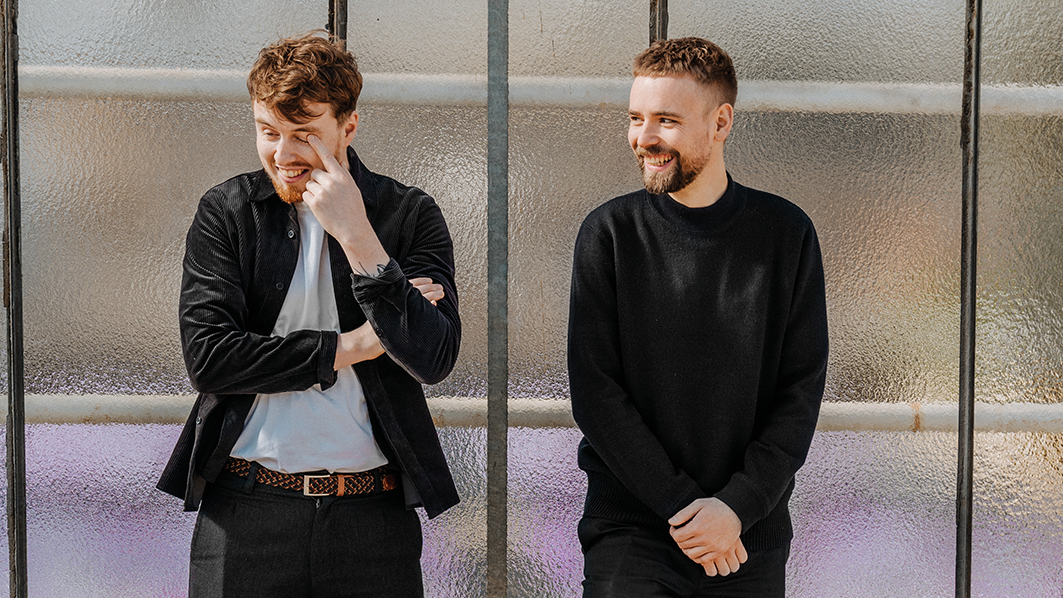
Where do your drum samples come from?
FT: “We have a massive folder of all kinds of samples that we gathered over the last 10 years, and at some point we put parts of them on the MPC. Now they’re on there we have no idea where they came from! But also it’s great, because every time we turn on the MPC, we’re surprised by what’s on there. Like, “where did we get that from?”
"On the computer you can see the sample source folder or the name of it, but the MPC1000 has this super small screen and you can’t really tell where the sample is from. So, you use samples without thinking too much where they came from. But yeah, it’s a big mixture of a lot of sources I’d say.”
SB: “There’s one sample pack we can recommend a lot, Samples From Mars.”
FT: “Oh yeah. That’s for sure. Like lately we use a lot of the Samples From Mars stuff because for the classic drum machines, they did a good job of recording them properly. Of course, there are tons of 808, 909 samples around the web, but I think these ones are the best we ever used. Also they produced these racks that you can use, with all the parameters already set to release, decay and all that stuff. They sampled them through a SP-1200, I guess, so some of them are super raw, but they sound great.”
Hardware:
Apple MacBook Pro
RME Fireface UFX
Genelec 8050B x2
Akai MPC1000
Roland Juno-106
Software:
Ableton Live
Wavesfactory Trackspacer
FabFilter, Korg and
Soundtoys plugins
You guys DJ, but created that album during lockdown. Was it difficult not being able to test tracks out on the dancefloor?
FT: “To be honest, we are super shy with how we test tracks out, we don’t play our own stuff that much. I don’t know why, maybe it changes after the lockdown, because we have done so much new stuff for the album and we could never play it to a crowd.”
You mention you tend to get your tracks mixed down by engineers, how come you prefer that to mixing them yourselves?
FT: “For the first years we thought we had to do everything on our own, but at some point, I think it was the Wave 100 EP that we put out on our own label, we had this one track where we couldn’t get the mixdown to the point where we were happy with it.
“It was the first time we tried using someone who has fresh ears and a more professional background only in mixing. That was the turning point where we said, ‘there’s the creative part of producing the music, and then there’s this whole next level of the mixdown, which doesn’t particularly have anything to do with our creative process.’
"It was this ‘aha’ moment for us, that it’s OK to give it to someone else who has a day job only doing that, so we can focus on the creative process. Then you can be sure that the finished product sounds good on every sound system. That’s worth a lot.
“That was also sometimes a reason why maybe we didn’t play a track in the club, as we thought perhaps it doesn’t sound so good in comparison to the track before. It’s like a new freedom, because now we can focus on just the production and the creativity.”
Creating Wave 200’s ’80s hardware bounce
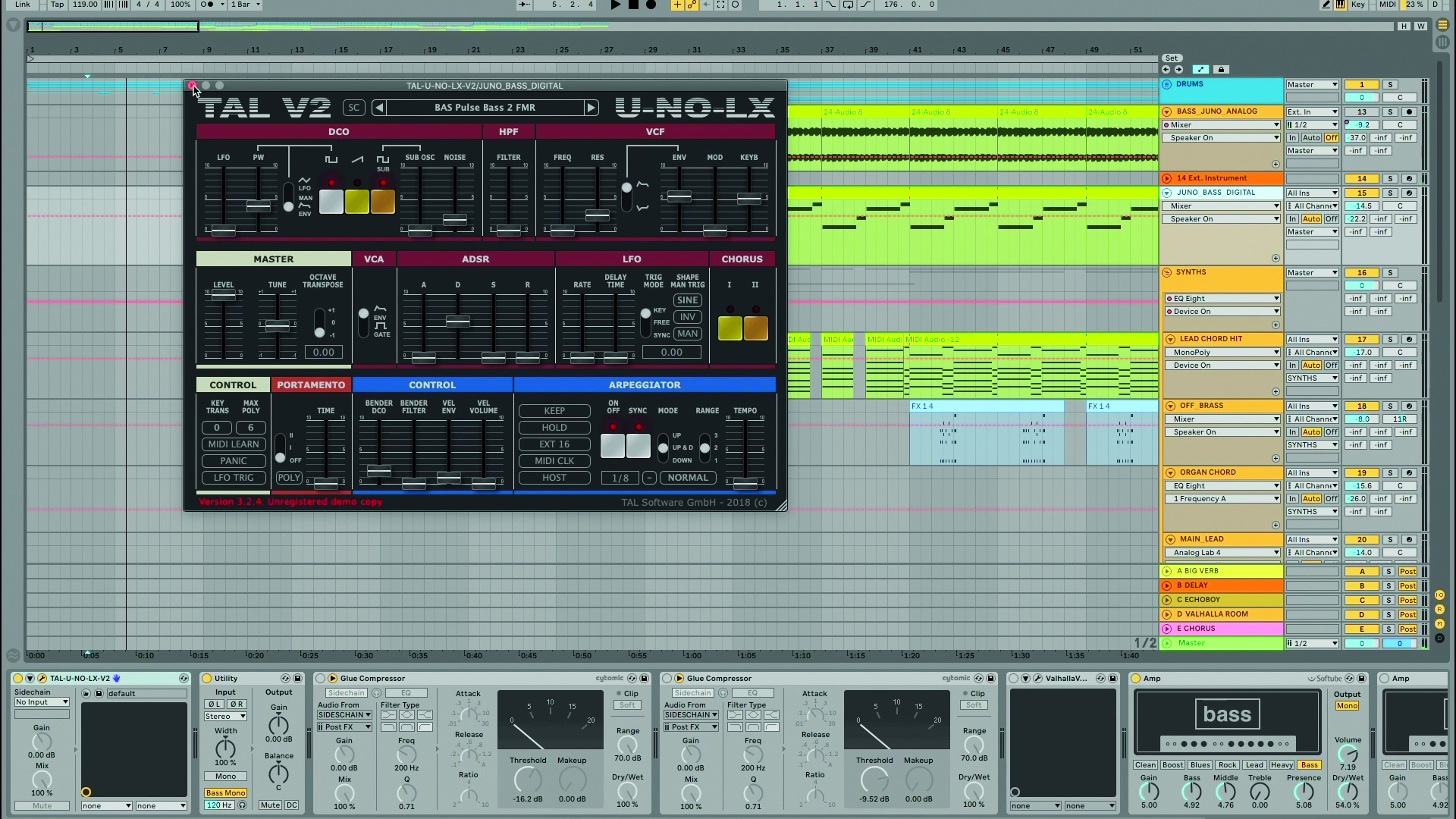
Originally the bassline for Wave 200 was created in software. “I made the bassline in lockdown with a Roland Juno-60 emulation, TAL Software U-No-LX, as I didn’t have synths at home,” explains Stephan. “After the lockdown, we went back to the studio and we decided to rebuild the bassline with a real Juno.”
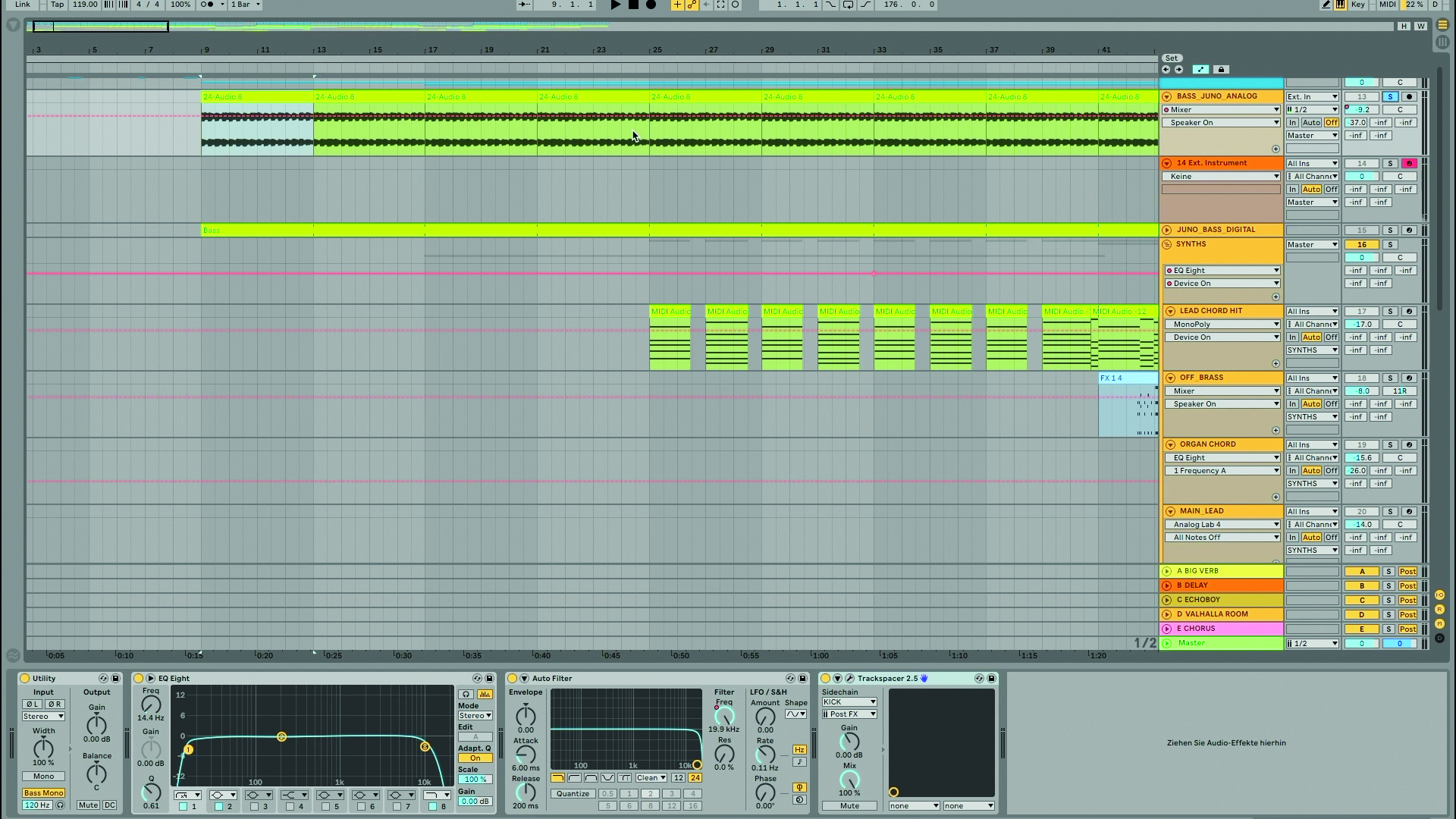
“When we replaced the bassline with one from our Roland Juno-106, we really felt it took it to the next level, especially because of the really nice Juno chorus, which sounds pretty dope!” says Friedrich. “One thing we did was use the Utility to put the frequencies up to 120Hz in mono, as the chorus spreads the sound in the stereo field.”
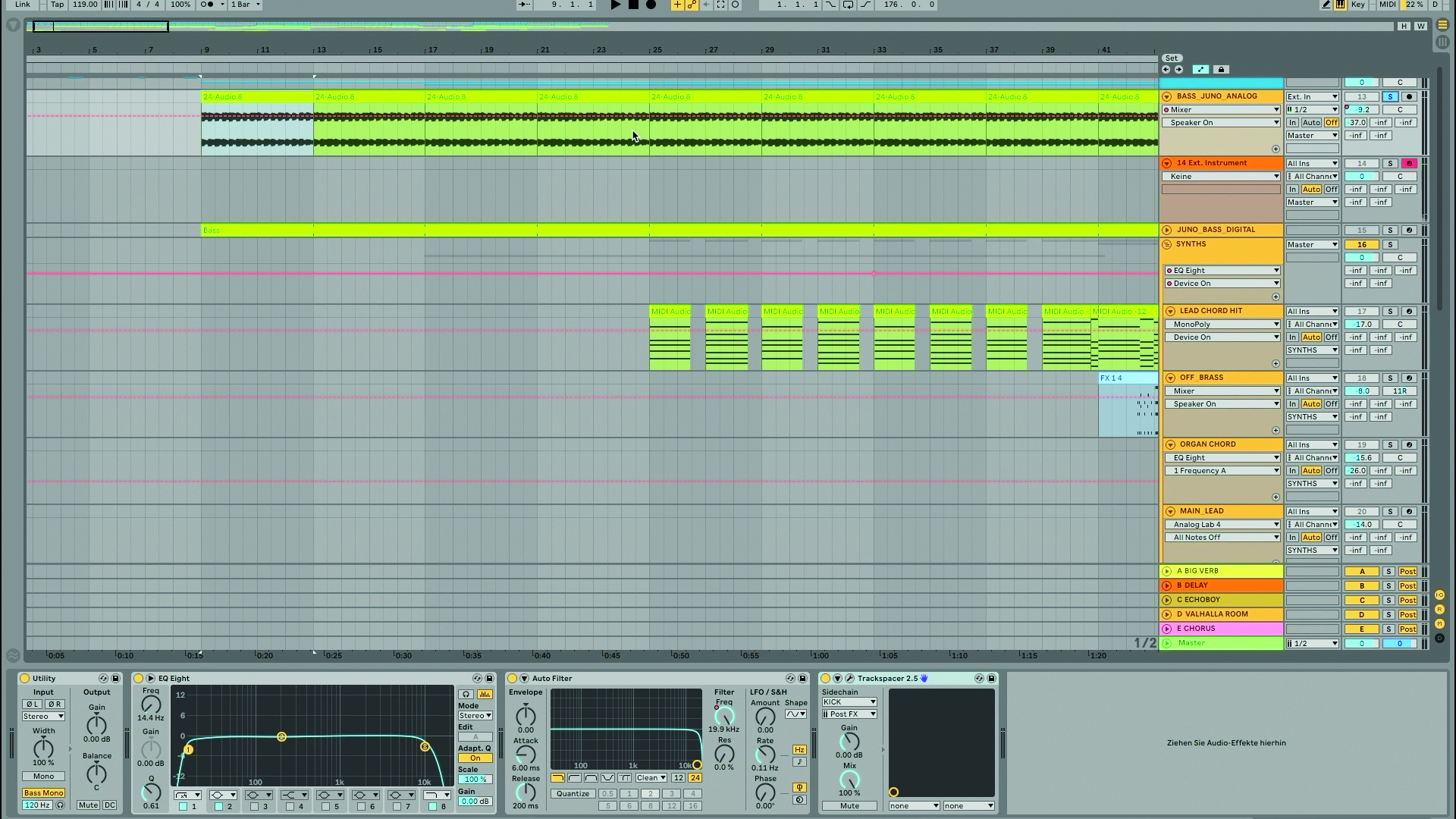
“Then we band-passed it with EQ Eight, we just cut out some of the low end, because it was heavy in the lows, and some of the highs that we didn’t need,” Friedrich continues. “We also automated the Auto Filter in low-pass mode, just to fade it out before the break,” adds Stephan.
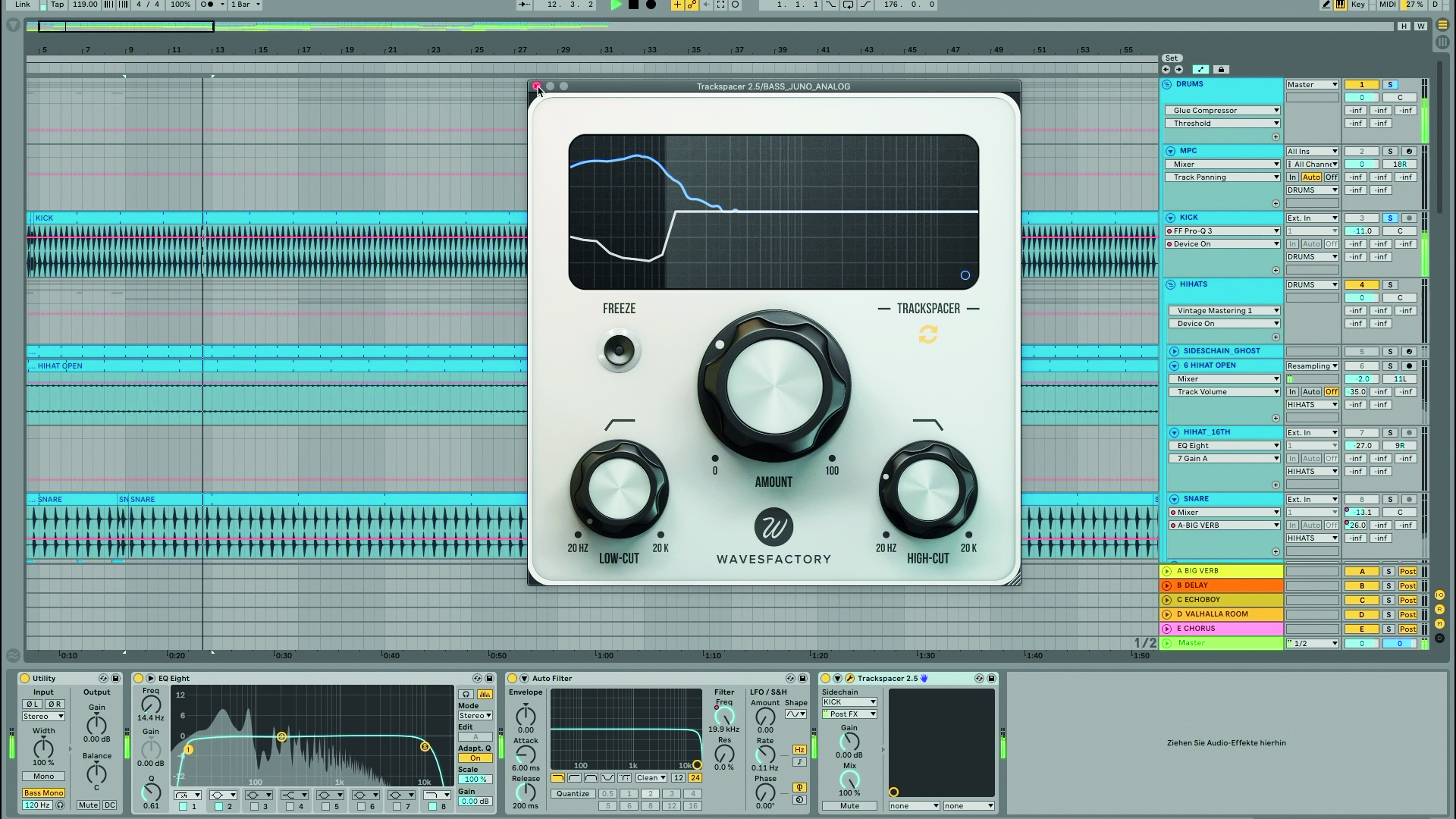
“We have this neat little tool, Wavesfactory Trackspacer, which we used like a side-chain compressor, except it only ducks certain frequencies,” reveals Friedrich. “So in this case we only wanted to side-chain the low frequencies of the bass, up to around 100Hz, and the rest stays as it is.”


Future Music is the number one magazine for today's producers. Packed with technique and technology we'll help you make great new music. All-access artist interviews, in-depth gear reviews, essential production tutorials and much more. Every marvellous monthly edition features reliable reviews of the latest and greatest hardware and software technology and techniques, unparalleled advice, in-depth interviews, sensational free samples and so much more to improve the experience and outcome of your music-making.
"Reggae is more freeform than the blues. But more important, reggae is for everyone": Bob Marley and the Wailers' Catch a Fire, track-by-track
“Part of a beautiful American tradition”: A music theory expert explains the country roots of Beyoncé’s Texas Hold ‘Em, and why it also owes a debt to the blues










